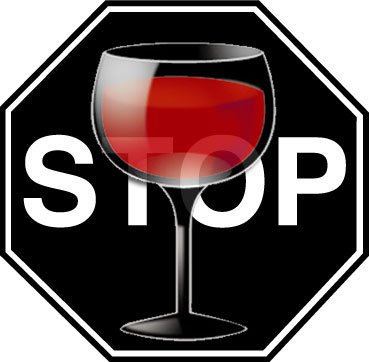GILROY
– For a police officer, the weekend before Christmas means
holiday parties, alcohol and more drunk drivers on the roads, and
that means more cops are needed on patrol to arrest these drivers
before they might crash and kill people.
GILROY – For a police officer, the weekend before Christmas means holiday parties, alcohol and more drunk drivers on the roads, and that means more cops are needed on patrol to arrest these drivers before they might crash and kill people.
Tight budgets are cutting into state and county police efforts to stop drunk drivers this year, but there will still be far more officers on patrol than normal this weekend.
Gilroy and Morgan Hill police will send out more officers and set up checkpoints on Monterey Road in both cities, stopping drivers briefly and checking for signs of intoxication.
The California Highway Patrol will do the same in other parts of the state, but the Gilroy/Hollister division of the CHP has no funding to set up its own checkpoints this year, Officer Terry Mayes said. The local CHP will, however, be putting more officers on the roads than normal.
“The maximum enforcement period will be from 6 p.m. on Wednesday, Dec. 24, to midnight on Sunday, Dec. 28,” Mayes said. “There will be 80 percent or more of available officers out.”
The Santa Clara County Sheriff’s Department can’t afford to put more than its standard number of officers out for drunk-driving prevention, according to Deputy Sheriff Terrance Helm, but deputies might participate in Gilroy’s checkpoint.
Gilroy’s sobriety checkpoint will be tonight from about 10 p.m. to 2 a.m. Morgan Hill’s will be Saturday from about 9 p.m. to midnight.
The effectiveness of checkpoints is mostly psychological, Gilroy police said; they tend to reduce the number of drunk drivers on the road but don’t necessarily lead to more driving-under-the-influence arrests. Gilroy police said they will check every car if possible, but if traffic is too heavy they will check cars by a preset standard (every fifth, sixth, etc.). Gilroy police assured people it will conduct its checkpoint in accordance with the guidelines issued in the Supreme Court decision, Ingersoll vs. Palmer.
Fatalities due to alcohol-related crashes are on the rise, both nationally and statewide, according to a statement issued by the California Office of Traffic Safety and the CHP. This is the fourth consecutive year California has experienced an increase in alcohol-related crashes. Likewise, national fatalities from alcohol-related crashes have risen since 1999 after a steady decline since 1982, according to the National Highway Traffic Safety Administration.
“The Highway Patrol is very concerned about the increase in impaired driving,” said CHP Commissioner D.O. “Spike” Helmick. “We want people to know that it’s a serious call to motorists not to drink and drive. I can assure you a DUI is not a pleasant experience, and it can affect the rest of your life.”
“The CHP isn’t out to put a damper on the spirit of the upcoming Christmas holiday,” said Capt. Bob Davies, commander of the Gilroy/Hollister CHP. “But motorists who drink and drive will find the CHP response to be more like Scrooge than jolly old Saint Nick. If you drink and drive, and we stop you, I can guarantee your holiday won’t be merry or happy.
“What’s the best thing you can give your loved ones this year? Your presence, not presents,” Davies added. “I urge every motorist to drive sober and exercise caution in all driving situations.”
“Our commander is very firm on not drinking and driving,” Mayes said. “It only takes one instance, as we have well seen, to lose your life and the lives of others.”
The county’s annual Avoid the 13 anti-DUI campaign continues through Jan. 2. It’s named “Avoid the 13” because it was originally a partnership of 13 law-enforcement agencies. It now includes 15.
The good news is that in 2002, there were no alcohol-related deaths on local highways between the day before Thanksgiving and New Year’s Eve.
Local CHP officers made 74 DUI arrests during the 2002 Thanksgiving-to-New Year’s Eve holiday season, an average of about two a day. Gilroy police and sheriff’s deputies added dozens more, although their DUIs in the 20 days between Dec. 13 and Jan. 1 – during the Avoid the 13 campaign – were half what they had been in 2001.
For most people, two drinks in less than an hour will put their blood-alcohol content at or over the legal limit of .08 percent. A 12-ounce beer, an average glass of wine and an ounce (i.e. shot) of hard liquor all count as a drink. It takes the average human body about an hour to get over the effects of one drink.
But even with a BAC as low as .02 percent, alcohol can hurt one’s driving ability. The probability of a crash begins to increase significantly at .05 percent and climbs rapidly after .08 percent, according to a 2000 study by Zador, Krawchuk and Voas.
Virtually all drivers, even experienced drinkers, are significantly impaired at .08 BAC, according to NHTSA studies from 2003.
Staff Writer Erin Musgrave contributed to this report.
Free or discount rides for drinkers
Bracco’s Towing and Transport offers free rides from Dec. 22 through Jan. 1. ~ 847-5766.
South Valley Cab will offer $2 off to intoxicated people during the holidays. ~ 776-3234 or toll free (888) 550-2555
Other taxicab companies
Golden Taxi ~ 846-6666
Union Taxi Co. ~ 846-9922
Yellow Cab Co. ~ 842-6333













